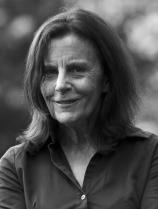Ernest Hemingway: A Biography
Review
Ernest Hemingway: A Biography
As a child, Ernest Hemingway was always around guns and started fishing when he was two. But his mother dressed him as a “twin” with his non-twin sister, sometimes dolling both in girly clothing. He grew up to be a symbol of machismo and a household word among the literati, known for his spare, gripping prose and his two grand obsessions: love and war. Still, despite his worldwide fame, mysteries remain.
Biographer Mary V. Dearborn has tackled the complexities of two other 20th-century American writers known for their grit and grime: Norman Mailer and Henry Miller. Here she throws light on arguably the most notable of the three, the only one to win a Nobel Prize. Yet Hemingway was never known for marching in step. He was a bare-knuckle fighter, a lover who had four wives and many liaisons, and a member of the “lost generation,” living mostly overseas by the early 1920s. He was fascinated by and compelled to write about the realm of men --- bullfighting, soldiering, deep-sea fishing, game-hunting safaris. His understanding of the value of short sentences, inculcated in his newspaper days, strengthened his fiction. His first novel, THE SUN ALSO RISES, was an overnight success.
"Dearborn’s work stands as a highly readable picture of the man Hemingway was, with an added nuance for a new century --- the man he, perhaps, was forced to pretend to be."
Dearborn has exhaustively researched her subject, including vignettes from recently available material about his life in Cuba. She, and all other biographers, must express awe for Hemingway, who, despite his weaknesses (alcoholism being significant) and his changeable, ever-adventurous nature, always found time to write, to pull together a new series of stories or a novella when required. THE OLD MAN AND THE SEA, written when he was white-bearded and growing portly, brought renewed interest to his flagging career --- it first appeared in Life magazine, which sold 5,300,000 copies on the strength of that comeback yarn. Like just about every tale Hemingway ever told, the novella was strongly autobiographical. But only a few years after this notable success, he began to wrestle the demons of alcohol and finally, like his father before him, killed himself with a gun.
Conscious of her role as a female writer examining this exemplar of machismo, Dearborn directs our attention to his strangely transgendered longings, his apparent fascination with androgyny (there were among his women several mannish ones, more than one openly bisexual). How did these repressed yearnings affect his life --- and his manner of death? Avoiding the temptation to merely “shine up to the legend,” Dearborn has created a fresh view of Hemingway. Living and writing in a time when gender roles were absolutely fixed, he had no choice but to act the bullish brawler, the war hero, the womanizer, the hunter/killer. What he might have done or written in a later, more tolerant era will never be known.
Dearborn’s work stands as a highly readable picture of the man Hemingway was, with an added nuance for a new century --- the man he, perhaps, was forced to pretend to be.
Reviewed by Barbara Bamberger Scott on May 19, 2017
Ernest Hemingway: A Biography
- Publication Date: September 11, 2018
- Genres: Biography, Nonfiction
- Paperback: 752 pages
- Publisher: Vintage
- ISBN-10: 052556361X
- ISBN-13: 9780525563617




